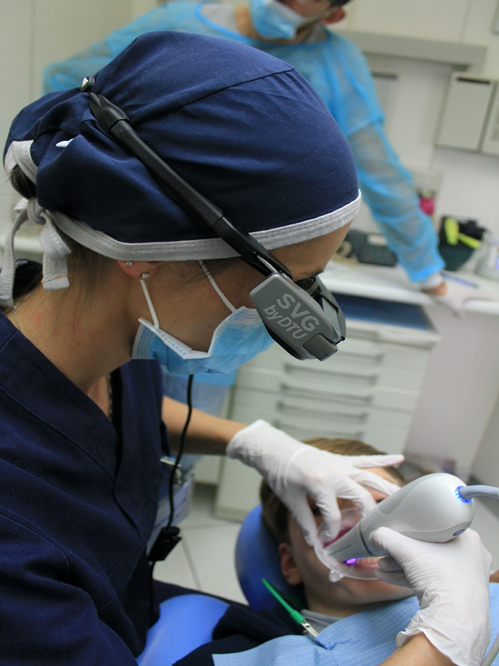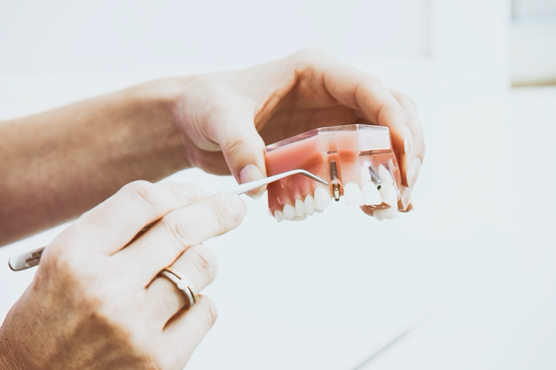What are the differences between pediatric vs. adult endodontics? Endodontists are doctors that specialize in endodontic treatments. Endodontists spend two extra years specializing in treatments that take on issues with the dental pulp. Endodontics has to do with the core of the tooth. This is primarily where the tooth connects to the tissue inside. Root canals are the most common endodontic therapies that restructure and heal the internal problems of the pulp.
Your dental pulp can fall victim to bacteria and cause decay or you can damage it by facing an injury or trauma, in both cases endodontic therapy or root canal is applied, however the methods differ depending on your age. Children go through a completely different method of root canal because the primary teeth are different from the adult teeth.
Differences between Primary and Adult Teeth
Differences between the roots of primary teeth and permanent teeth is vast, the roots of the primary teeth are thinner and shorter than permanent teeth. The nerve chamber of the primary teeth is also smaller than adult teeth.
Root Canals for Adults
Root canal for adults means cleaning of the microbial fiber present inside the root canals with the help of metal files and biochemicals. The endodontic physically attempts to clean the inside of your root canal by the help of various tools. Recent innovations have added microscopic tools to the procedure along. You can require more than one visit to the clinic. If you are an adult, the practitioner is likely to completely remove the damaged nerve tissue, clean the root canal and then seal it to prevent re infection.
Root Canals for Kids
If the child’s roots are premature, this means that they are weaker and more sensitive. These types of teeth need extra care and additional dental knowledge. Endodontic therapy for children does not involve sealing the root canals because baby teeth need to absorb and allow the permanent teeth to take their place. Root canals for kids involve the usage of pulp caps. Primary teeth decay much faster than adult teeth, so that is the main reason by children go through a completely different endodontic treatment.
Pulp capping
Pediatric Endodontics uses the techniques of pulp capping and pulpotomy. Pulp capping prevents the nerve tissue from decaying or dying out. It avoids root canal therapy in most cases. The endodontist removes all the infected enamel and tissues and places a cap on it to prevent further contamination.
Pulpotomy
It is procedure that the endodonist mainly performs on small children. In this procedure, the crown, which is the visible part of the tooth, is removed and the pulp is left connected to the tissue. The practitioner performs this treatment in response to pulpitus. Pulpitus results when cavities are left untreated; this causes inflammation in the pulp. The child when suffering from from this will become sensitive to hot and cold sensations on his teeth.
Pulpotomy is different from pulpectomy, which is a procedure that involves the extraction of the tooth. In pulpotomy, the doctor only removes the crown of the tooth because the tooth decay or contamination has not damaged the pulp completely. In cases where there’s damage to child’s pulp, the doctor might suggest a pulpectomy. In which the endodontist removes the whole tooth.
A Doctor might also consider a pulpotomy in cases where a child goes through a traumatic injury. A pulpotomy in this case can protect and sustain the root of the tooth so that permanent tooth can grow. The endodontist prefers not to remove the primary tooth is many cases because the arrangement of the primary tooth matter for the permanent tooth to sprout evenly. This is a safe procedure. You should only consider it if the pulp of the tooth is preserved and still healthy.
During The Procedure
It initiates with local anesthesia, the numbing down of the infected area is important to abstain from any sort of pain. The dentist then singles out the tooth, the pulp chamber is need drilled. If the pulp chamber bleeds, it means that the pulp is still healthy and pulpotomy is possible. However if the pulp chamber is dry and has a lot of puss in it, it is a sign that the pulp is infected. In this scenario, pulpotomy is not possible and pulpectomy takes place.
In case of bleeding, the doctor places a wet cloth on the pulp, the bleeding usually stops within 1 to 2 minutes. Once the bleeding stops, the doctor covers the pulp with specific medication. The tooth, then restores and gets ready for permanent tooth growth.
Pediatric vs. Adult Endodontics: Conclusion
Treating primary teeth takes much more care and consideration. It is important to get your kids regularly checked by dentists and teach them the basics of oral hygiene. Avoiding substances that can be harmful for the teeth is also important. The pain that comes with contamination can be unbearable. If you know anyone that suffers from Endodontic pain, contact Dr Young Bui for consultation and treatment.


